Mi o My Italy Blog
Welcome to the MioMyItaly.com blog, your ultimate gateway to all the latest news and stories from the heart of Italy!
At MioMyItaly, we're dedicated to bringing you the freshest updates, news, and insights from Italy's ever-evolving landscape. Whether you're interested in the latest developments in Italian politics, the newest trends in fashion and design, or the most exciting events happening across the country, you'll find it all right here.
But our mission goes beyond just reporting the news. While Rome, Venice, Florence, and Tuscany often steal the spotlight, Italy harbors countless hidden treasures awaiting discovery.
Beyond the beaten paths lie the secrets of an extraordinary Italy. Embark with us on a journey through these lesser-known corners of Italy, where ancient villages cling to rugged cliffs, and time seems to stand still amidst the tranquil countryside.
Start your journey to Italy below...
Oct 21, 2025
Italy’s Empty Cradles — and Why Hope Isn’t Lost
The latest Istat report is heartbreaking. In 2024, fewer than 370,000 babies were born in Italy. The lowest number since records began. On average, Italian women now have just 1.18 children, and the trend shows no sign of slowing. In places like Abruzzo and Sardegna, births fell by more than ten percent in a single year.
It’s easy to look at these numbers and feel only despair. Towns grow quieter, schools close, and once-vibrant villages in the hills of Calabria or the plains of Veneto fall into silence. The laughter of children, once the heartbeat of every piazza, grows rare.
But Italy has faced harder times. When the country was first unified in 1861, it had barely 26 million people, most of them poor farmers struggling to survive. Yet from that modest beginning rose the Italy we know and love today—a land that shaped art, music, design, and the very idea of beauty. Greatness has never depended on size alone.
What we must not allow is fear. Some voices claim that “Italy is being replaced,” that immigrants—especially Muslims (3.5% of the population)—are taking over. This is nonsense. The truth is that foreign-born families make up barely a fifth of new births. And, Muslim or not, they are not erasing Italy; they are helping keep its future alive. Many of these parents speak Italian, send their children to Italian schools, and share the same dreams as anyone else: stability, safety, and a better tomorrow.
The real challenge is creating a country where young Italians can afford to raise families — where work is stable, homes are within reach, and motherhood isn’t a penalty.
Italy’s population may be shrinking, but its soul—generous, creative, resilient—remains vast. Every small town that welcomes a newborn, every parent who dares to hope, every teacher who keeps a classroom open—they are proof that Italy still believes in tomorrow.
Because even with fewer cradles, the heart of Italy still beats strong.
Oct 08, 2025
The Most Beautiful Door in the World
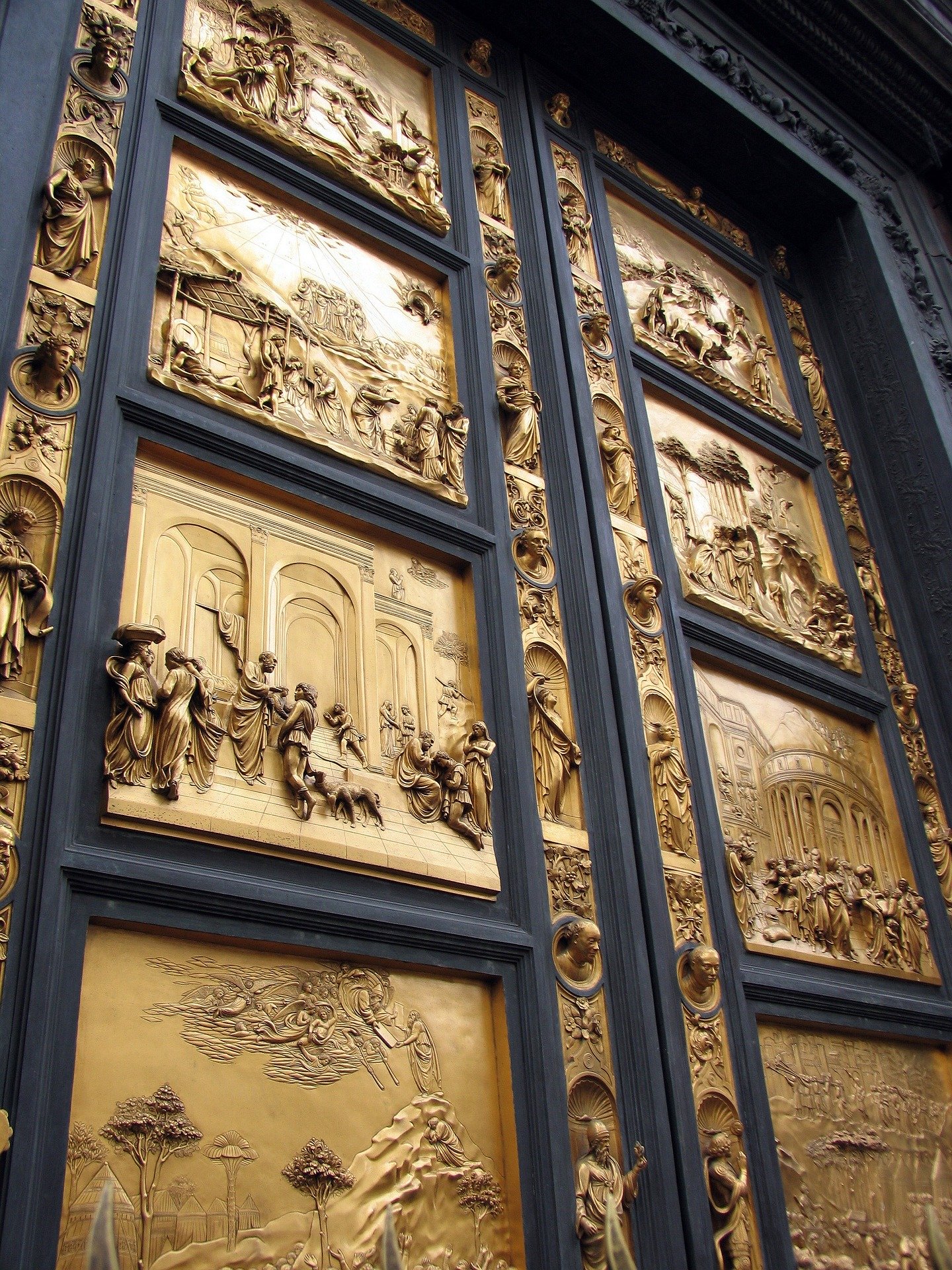
The Battistero door in Florence, also known as the Gates of Paradise, is a masterpiece of Renaissance art and a testament to the city's rich cultural heritage. Located on the eastern side of the Baptistery of Saint John, these bronze doors were created by the renowned artist Lorenzo Ghiberti. Commissioned in 1425 and completed in 1452, the doors consist of ten panels depicting scenes from the Old Testament, each one a marvel of intricate detail and artistic skill.
Ghiberti won the commission in a competitive contest, besting other prominent artists of the time, including Filippo Brunelleschi. His victory marked a significant moment in the Renaissance, emphasizing the era's values of artistic innovation and humanism. The panels showcase Ghiberti's mastery of perspective and his ability to convey complex narratives through relief sculpture.
Each panel of the Gates of Paradise is a visual storybook, illustrating biblical tales such as the creation of Adam and Eve, the story of Noah, and the sacrifice of Isaac. Ghiberti's use of perspective and spatial depth was revolutionary, creating a sense of three-dimensionality on a flat surface. This technique not only brought the scenes to life but also influenced generations of artists, including Michelangelo, who famously dubbed the doors the "Gates of Paradise."
The doors were originally installed as the east doors of the Baptistery, facing the Florence Cathedral, and they quickly became one of the city's most admired artworks. In the 20th century, to protect them from damage and the effects of weather, the original doors were moved to the Museo dell'Opera del Duomo, and replicas were installed in their place.
Oct 07, 2025
Discover Italy's Regions: Best to Worst - Our Ultimate Guide
Planning your Italian vacation? Check out our ranking of all 20 regions, from Veneto’s rich culture to Calabria’s rugged beauty. See the full list now!
Continue reading "Discover Italy's Regions: Best to Worst - Our Ultimate Guide"
Oct 01, 2025
Italy Slams the Door on Citizenship for Americans and Others
Italy has officially approved Law 74/2025, a sweeping reform that fundamentally reshapes how citizenship by descent, known as jure sanguinis, is granted.
For decades, Italy’s rules were among the most generous in Europe. Anyone who could trace their ancestry back to an Italian alive after 1861 — the year of unification — had the right to apply for recognition as an Italian citizen. This fueled a massive surge in applications across the world, particularly in countries with large Italian diasporas such as the United States, Canada, Brazil, and Argentina.
That era is now over. Under the new law, only those with a parent or grandparent born in Italy will be eligible. More distant ancestry, once enough to secure citizenship, no longer qualifies. Children born after the law’s enactment will also face tighter rules: they will only inherit citizenship if at least one parent was born in Italy and has lived in Italy for two years prior to their birth.
The impact is dramatic. Millions of people who once believed they had a path to Italian citizenship now face a closed door. Companies that specialized in “passport by descent” services are bracing for a collapse in demand. For many families in North and South America, the hope of securing dual citizenship has effectively vanished overnight.
There are, however, some transitional provisions. Applications already filed, consular appointments already booked, or court cases already underway before March 28, 2025 will likely still be processed under the old rules. Anyone starting the process after that date will have to meet the new, far stricter requirements.
For those without qualifying ancestry, other routes such as marriage or residency remain available, but these too have been tightened. Marriage applicants, for instance, must pass a B1-level Italian language exam, proving their ability to handle everyday conversation.
While legal debates and possible challenges may arise, the law is in force and unlikely to be reversed in the near future. For millions abroad, the dream of reclaiming Italian nationality has just slipped out of reach.
Sep 25, 2025
My Guide to Assisi: Things to Do, Places to See, and Moments to Savor
From sacred sites to charming cafes, here are the top things to do in Assisi. Come explore the beauty and peace of this unforgettable Umbrian town.
Continue reading "My Guide to Assisi: Things to Do, Places to See, and Moments to Savor"
Sep 07, 2025
Italy Has a New Saint
When I first heard that Carlo Acutis had been canonized, I felt a mix of awe and inspiration. Here was a young man—only 15 when he passed—now officially recognized by the Church as a saint. And not just any saint: the first millennial. It’s incredible to see someone so young, someone who lived in our digital age, celebrated in the heart of Catholic tradition.
Carlo was born in London in 1991 but grew up in Milan. Even as a teenager, his faith was extraordinary. He loved the Eucharist, but he also loved technology—video games, computers, and the internet. Yet he didn’t let screens and gadgets distract him from the bigger picture. He used them to do good, creating a website that catalogued Eucharistic miracles from around the world. It earned him the nickname “God’s Influencer,” and honestly, it’s hard not to admire his vision and creativity.
Despite his untimely death from leukemia, Carlo’s life left a huge impact. His canonization recognizes miracles attributed to his intercession, and his preserved body—displayed in Assisi—continues to draw pilgrims from all over, including young people who see in him a model for living faithfully in the modern world.
What I love most about Carlo’s story is its reminder that holiness doesn’t have to be distant or untouchable. You can be a teen, a student, a tech lover, and still lead a life of devotion and generosity. His canonization is a message to all of us, especially young people: your faith can be relevant, dynamic, and yes—even digital.
Carlo Acutis proves that God’s work can flourish in the most unexpected ways—and sometimes it starts with a 15-year-old Milanese boy with a computer and a big heart.
Aug 09, 2025
You arrive thinking it’s a trip—leave knowing it’s a beginning.
Perched on a gentle hill in the heart of Tuscany, this perfectly preserved medieval village looks almost too perfect to be real—like something out of an illuminated manuscript. Encircled by its ancient stone walls and fourteen proud towers, it has guarded the Tuscan countryside for centuries, watching the world change while keeping its own pace delightfully slow.
Maria and I first saw Monteriggioni on a warm summer evening. The setting sun painted the stone walls gold, and the air was heavy with the scent of rosemary and wild thyme.
We entered through the Porta Franca, just as countless pilgrims did along the Via Francigena, the ancient road that once connected Canterbury to Rome. Inside, it felt like time had folded back on itself—no cars, no noise, just cobbled lanes, flower-filled balconies, and the soft murmur of voices in the piazza.
The central square, Piazza Roma, is the beating heart of the village. Here you’ll find a modest stone church, little cafés where locals greet you as if they’ve known you for years, and trattorias serving bowls of steaming pici pasta with rich wild boar ragù. Sit with a glass of Chianti and you can almost hear the clink of armour from when Monteriggioni stood as a fortress between Florence and Siena.
Everywhere you turn, the views will take your breath away—rolling hills patterned with olive groves, vineyards stretching to the horizon, and in spring, fields ablaze with poppies. The towers, still mostly intact, offer a panoramic glimpse of the Tuscan dream. On quiet mornings, a soft mist often lingers in the valleys, making the landscape feel like a living painting.
If you can, visit in July for the Monteriggioni di Torri si Corona festival. The village transforms into a medieval fairground, complete with costumed performers, music, and stalls lit by flickering torches. It’s magical—children run about with wooden swords, troubadours sing old songs, and the air smells of roasting chestnuts and grilled meats.
Monteriggioni is not a place to rush through. Come here to slow down, to breathe in the Tuscan air, to wander without aim, and to let the rhythm of history and beauty wash over you. When you leave, you’ll take a piece of it with you—and, like us, you’ll find yourself longing to return.
Continue reading "You arrive thinking it’s a trip—leave knowing it’s a beginning."
Aug 06, 2025
Bridge to Sicily to Go AHEAD
Yes, it’s official: the bridge between Sicily and Calabria is going ahead. EU funding is now secured, and Italy's government says construction will begin in earnest. The final design has been approved, and the political momentum is stronger than ever.
Still, I’ll believe it when I see it. After decades of promises, delays, and false starts, it’s hard not to remain a little skeptical. But this time, things feel different.
A lot of people ask me about the earthquake risk. That’s a very real concern, and it’s been taken seriously. The finalized design has addressed the seismic and environmental challenges head-on. Here's what the bridge is engineered to handle:
Earthquakes:Withstands magnitude 7.1 earthquakes without damage, with decades of research showing that as the maximum expected in the area.
Wind:Built to endure winds exceeding 300 km/h. Stability has been thoroughly tested.
Rail Traffic:Supports the simultaneous passage of two 750-meter-long trains on each track.
Italy’s government has framed this project as more than just a regional link. They say it will benefit not only Sicily and Calabria but the entire country—and even Europe. The bridge is intended to connect supply chains, boost tourism, create jobs, and unlock long-term economic growth.
Will it live up to the promise? We’ll soon find out. In the meantime, if you're wondering about earthquakes in Sicily and Calabria, I go into more detail in the continue reading link at the end.
Jul 21, 2025
The Real Deal: Our Homemade Lasagna Recipe, Just Like Nonna Makes It
A truly delicious, authentic homemade lasagna—just the way my Italian nonna makes it. Rich, hearty, and full of love, this is the way lasagna should be made.
Continue reading "The Real Deal: Our Homemade Lasagna Recipe, Just Like Nonna Makes It"
Jul 13, 2025
Did Italian Women Once Wear the Hijab?
I was asked: "Did Italian women once wear the hijab (the hijab is a scarf covering the hair—not the same as the niqab and burqa, which cover the face.) My first reaction was, "What a silly question." Then I researched it and the answer was a surprise. Yes, they did. Sort of...
Italian women of old, especially in rural or traditional Catholic communities, covered their hair with a scarf for several intertwined reasons—religious, cultural, and social.
Here's a breakdown:
1. Religious Modesty (Catholic Influence)
In Catholic tradition, especially before the Second Vatican Council (1962–1965), women were expected to cover their heads in church as a sign of humility and reverence. This was based partly on 1 Corinthians 11:5–6, where St. Paul writes that a woman should cover her head while praying. In Italy, a deeply Catholic country, this norm extended beyond church and influenced daily dress, especially among older generations.
2. Social Respectability
A woman with uncovered hair was sometimes seen as immodest or attention-seeking. Covering one's hair, especially as a married woman, was a way to signal dignity, modesty, and propriety—especially in small towns where social norms were strong.
3. Tradition and Custom
Head coverings (like scarves, kerchiefs, or veils) were part of everyday life for centuries in Italy, particularly in rural areas. Women wore them for protection from sun or dust while working in the fields and to stop hair from falling in food when cooking.
4. Marital and Age Indicators
In some regions, whether or how a woman covered her hair indicated her marital status or age. For example:
Young unmarried women might wear their hair loosely or partially covered.
Married women would typically cover it fully.
Widows often wore black veils or scarves.
So while the practice had religious roots, it became deeply embedded in Italian cultural norms, especially in the south and the countryside, and lingered well into the 20th century.
Jul 06, 2025
Italy offers REAL Freedom
Imagine a life without borders.
That’s the everyday reality for Italian (and EU) citizens — the freedom to live, work, and thrive across all 27 European Union countries, plus Iceland, Liechtenstein, Norway, and Switzerland.
This isn’t just convenience — it’s life-changing freedom.
For young people, it means chasing dreams in Paris one year and working in Barcelona the next. It means studying in Amsterdam, starting a business in Milan, or simply living life on your own terms. No visas. No red tape. Just opportunity.
For families, it opens up a continent of safe, vibrant places to build a life.
For retirees, it’s a golden ticket to settle in a Tuscan village, a Greek island, or anywhere the heart leads.
This is one of the most remarkable things about EU citizenship — something many don’t fully appreciate until they’ve used it. It's about choice, freedom, and the chance to design the life you want in some of the world’s most beautiful and diverse places.
If you have EU citizenship, treasure it. If you're eligible to claim it — don’t delay. It’s a gift like no other. The most prestigious citizenship of all. The one the entire world craves.
Here are the countries:
Austria
Belgium
Bulgaria
Croatia
Cyprus
Czech Republic
Denmark
Estonia
Finland
France
Germany
Greece
Hungary
Ireland
Italy
Latvia
Lithuania
Luxembourg
Malta
Netherlands
Poland
Portugal
Romania
Slovakia
Slovenia
Spain
Sweden
Switzerland
Lichtenstein
Norway
Iceland
Jun 21, 2025
Is this the work of Michelangelo?
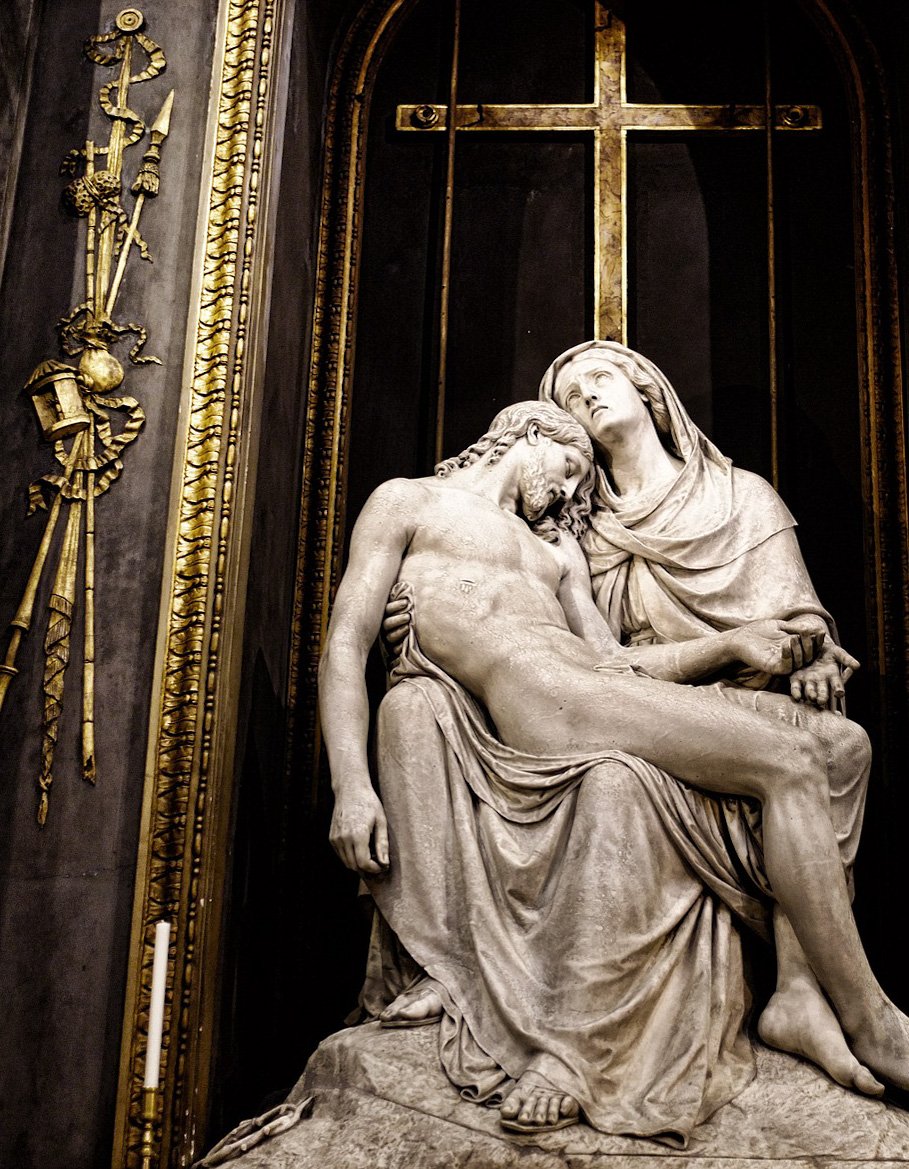
In the heart of Milan, the Temple of San Sebastiano cradles a profound secret—an exquisite Pietà sculpted by the skilled hands of Italian artist Benedetto Cacciatori. This hidden gem stands as a unique testament to the enduring power of artistic expression.
While Michelangelo's renowned Pietà in the Vatican captures the poignant moment with the head of Jesus positioned lower, Cacciatori's interpretation takes a distinctive and equally poignant approach. In this incarnation, Mary tenderly rests her cheek upon the head of Jesus, her gaze uplifted toward the heavens. This subtle variation infuses the sculpture with a profound sense of tragedy and emotion, inviting viewers to contemplate the profound connection between mother and son.
The Temple of San Sebastiano serves as the silent custodian of this masterful creation, offering a sanctuary for those seeking a different perspective on the iconic Pietà. Benedetto Cacciatori, a sculptor of notable prowess, has left an indelible mark with this stirring work, beckoning art enthusiasts to venture beyond the well-trodden paths and discover the nuanced beauty concealed within the artistic treasures of Milan.
While Michelangelo's Pietà remains an unrivaled masterpiece, Cacciatori's rendition in Milan stands as a testament to the diverse ways in which artists channel their emotions and interpretations into timeless works of art, ensuring that the resonance of the Pietà continues to captivate and move generations.
Michelangelo's version is below...
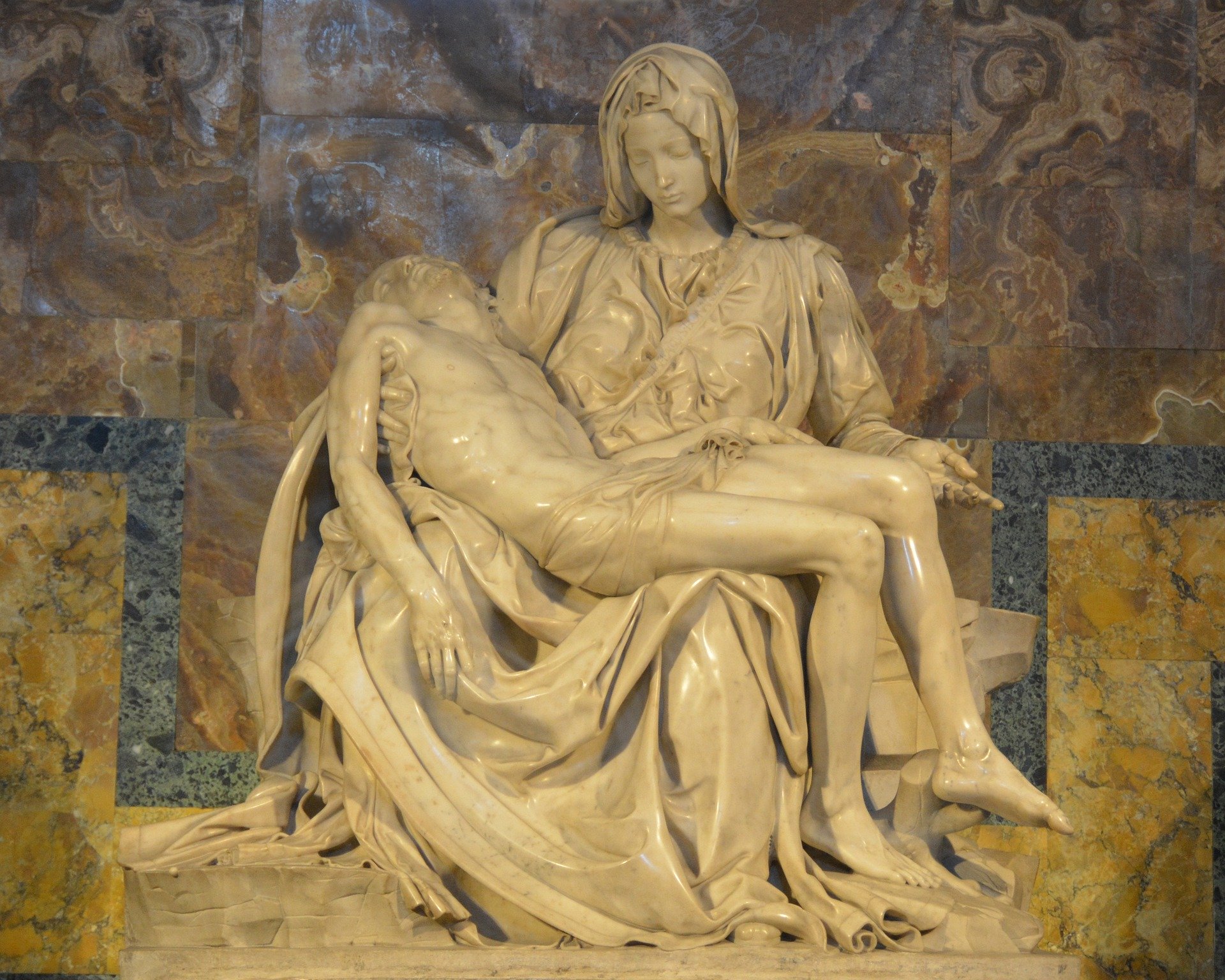
There is another version too, the one in the photo below. It is in the Trinita dei Monti church in Rome and is a plaster copy of the original marble work by Wilelm Theodor Achtermann, which was once upon a time in the Munster Cathedral. Sadly, the original was destroyed in the war.
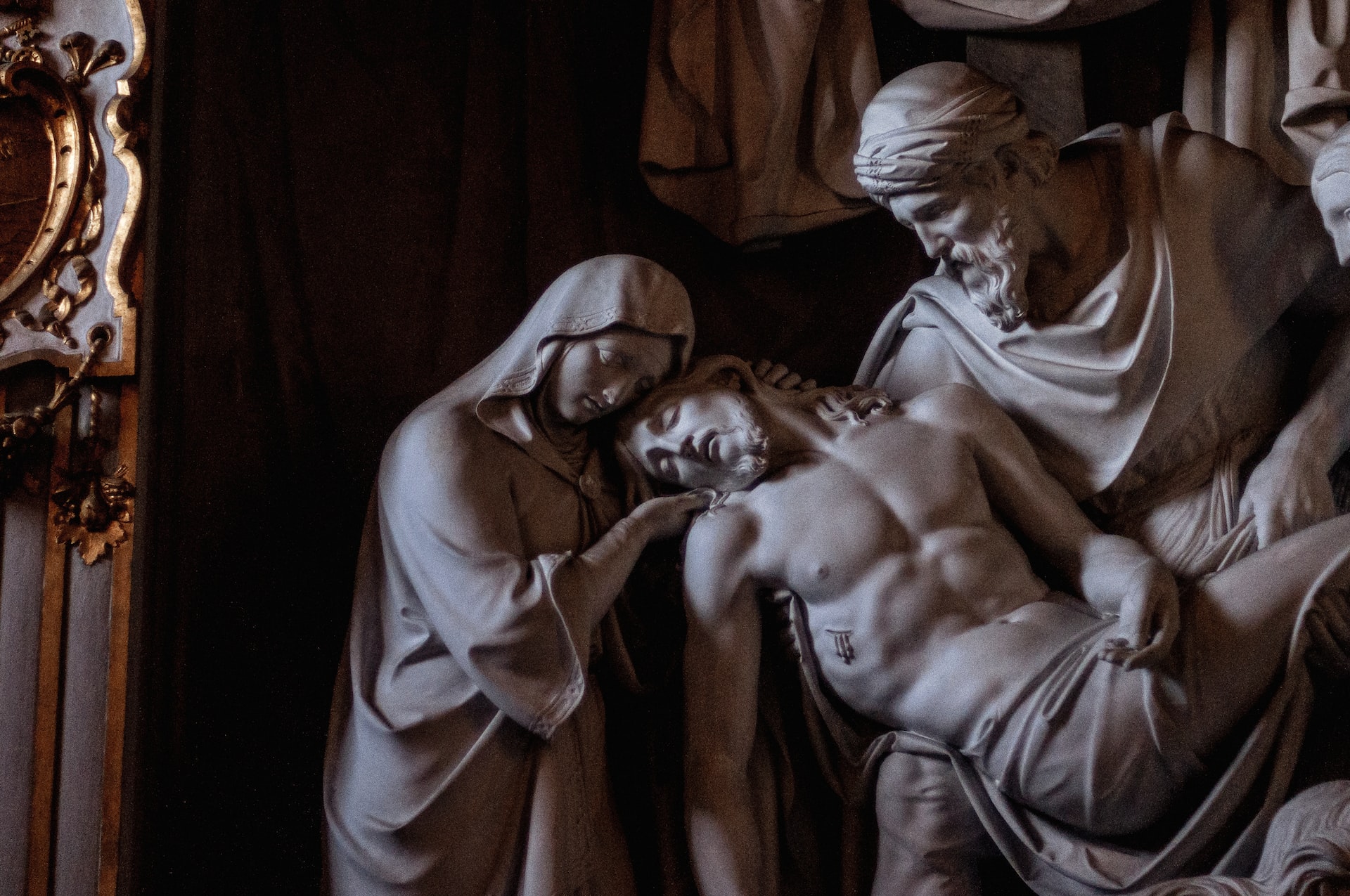
Jun 17, 2025
Beneath Perugia: A Hidden World
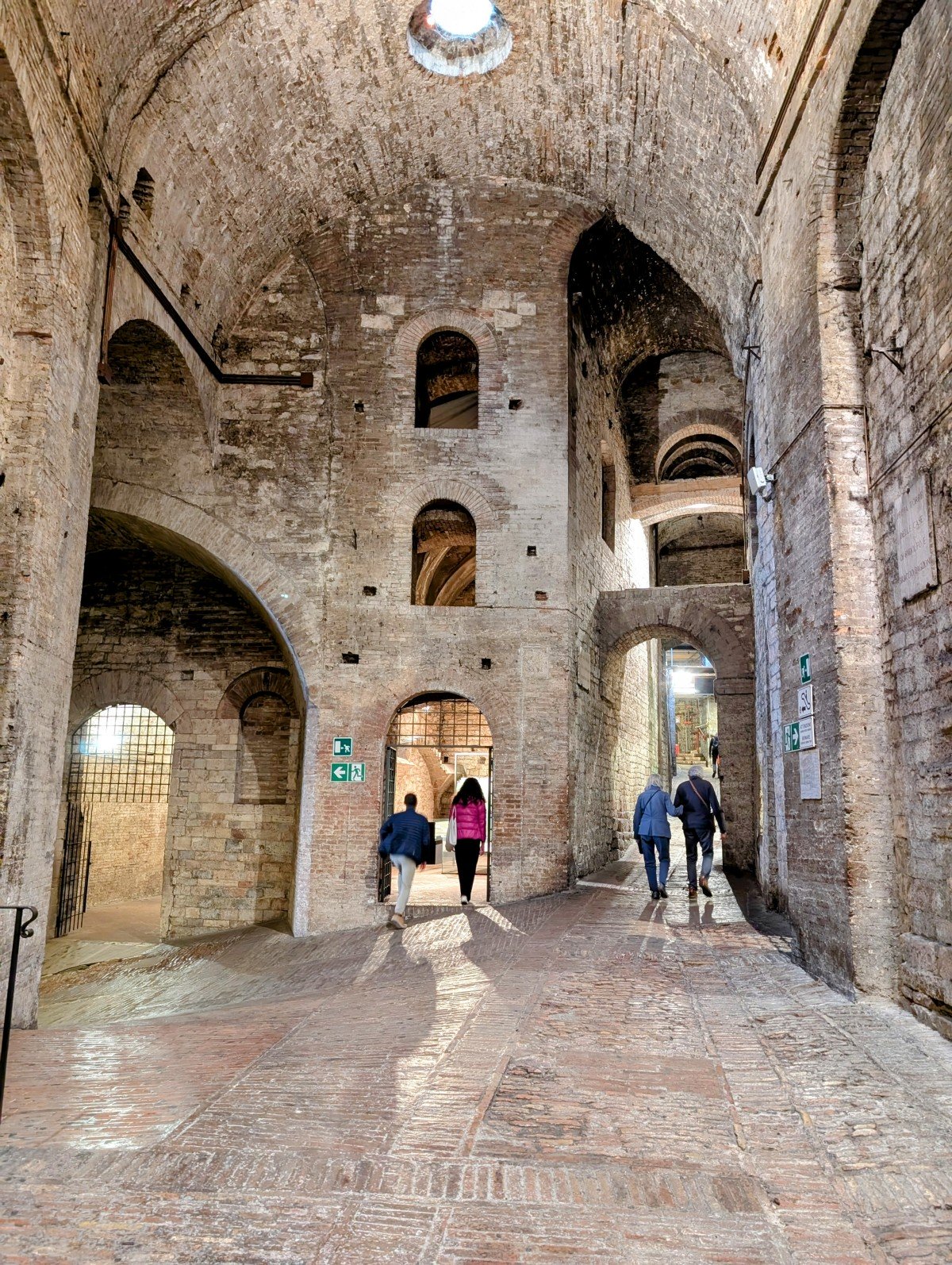
Tucked away beneath the cobbled streets and medieval charm of Perugia lies one of Italy’s best-kept secrets—an underground city so rich in history, it feels like stepping straight into the soul of Umbria.
Perugia has a whole city beneath the city!
It’s called the Rocca Paolina, and walking through it is like entering a time machine. Imagine wandering through ancient stone corridors, vaulted brick ceilings arching overhead, and ghostly streets where noble families once lived—now buried but beautifully preserved. It’s surreal. Mysterious. Magical.
Built in the 16th century by Pope Paul III to stamp his power over the rebellious Perugians, the Rocca Paolina was more than a fortress—it was a statement. To build it, the Pope had an entire neighborhood demolished, swallowing up homes, towers, and even a church. But the stones of those lives weren’t lost—they were absorbed into the underground stronghold. And today, you can walk those same pathways, still echoing with history.
It’s free to visit, and unbelievably easy to miss. One moment you’re in bustling modern Perugia, then suddenly—down an escalator—you’re transported into centuries past. Cool stone walls, ancient arches, flickering lights… it's a world apart.
If you love Italy’s layers—the way beauty, power, and mystery intertwine—then Perugia’s underground city will steal your heart. This is the kind of Italy we live for at MioMyItaly: not just the famous spots, but the hidden gems that leave you speechless.
So next time you’re in Umbria, don’t just look around. Look beneath. The soul of Perugia is waiting underground… and it’s unforgettable.
Pozzo Etrusco — the Etruscan Well
It was built over 2,300 years ago, long before the Romans arrived, and it’s a true feat of ancient engineering. Imagine lowering buckets of water by torchlight into a vast, echoing chamber carved into stone… that same water once sustained the people of Perugia through sieges and scorching summers.
Today, you can descend into this mysterious space via a narrow staircase. As your eyes adjust to the low light and cool air, you’ll see the incredible craftsmanship — the stones fitted together so precisely, it feels almost modern.
Throughout the city, Perugia hides an entire network of ancient cisterns, aqueducts, and subterranean passageways.
Together, they reveal how the Etruscans and later the Romans mastered the art of water — not just as a necessity, but as a symbol of life and resilience.
When you visit, don’t stop at the surface. Perugia is beautiful up top, yes — but below? It’s pure magic.
Jun 12, 2025
Friday the 13th? That’s not unlucky in Italy!
Here are 7 quirky superstition differences between Italy and the UK/USA:
Unlucky Day:
UK/USA: Friday the 13th
Italy: Friday the 17th – because 17 in Roman numerals (XVII) can be rearranged to VIXI, Latin for "I have lived" = not ideal!
Lucky Charm:
UK/USA: Horseshoes are hung open side up to hold the luck
Italy: Hung open side down to pour the luck onto you!
Black Cats:
UK/USA: Seen as bad luck
Italy: Crossing your path? That’s a good omen—especially at night
Toasting:
UK/USA: Say "cheers," clink glasses, eye contact optional
Italy: Always make eye contact when toasting, never toast with water, and don’t cross arms—it’s bad luck (and bad manners!)
Number to Avoid:
UK/USA: 13
Italy: 17—airplanes and hotels often skip this number entirely
Spilling Olive Oil:
UK/USA: Just a mess
Italy: Serious bad luck! It’s considered a symbol of prosperity—don’t waste it
Bread on the Table:
UK/USA: Nothing unusual
Italy: Never place bread upside down—it’s a sign of disrespect and bad luck
May 28, 2025
The 12 greatest train journeys in Italy & Tips Galore
From the 12 greatest Italian train journeys to common visitor mistakes never to make? We have everything you need to know about train journeys in Italy
Continue reading "The 12 greatest train journeys in Italy & Tips Galore"
Apr 26, 2025
Big News for Amalfi Coast Lovers!
Starting this summer 2025, exploring Italy's stunning Amalfi Coast has become even more accessible. The newly revamped Salerno Costa d'Amalfi Airport is now welcoming an expanded roster of international flights, making your journey to this picturesque region smoother than ever.
Convenient Location:
Located just about 45 km from Amalfi itself, Salerno’s new airport means you no longer have to deal with the long, tiring journey from Naples. For years, travelers arriving in Naples faced expensive private transfers or had to brave crowded, often chaotic trains and buses. The Circumvesuviana train, in particular, could be a challenging experience — standing room only, little air conditioning, and a journey that felt endless when all you wanted was the sea breeze of the Amalfi Coast. Private taxis, while more comfortable, could easily cost over €150 each way.
Expanded Flight Options:
In 2025, several airlines are offering direct flights into Salerno from cities across Europe, including London, Paris, Barcelona, Manchester, and more. This opens up a new, stress-free way to land almost right on the doorstep of Amalfi, Positano, and Ravello.
Why This Matters:
The new Salerno Costa d'Amalfi Airport saves you precious time and energy. Instead of spending hours navigating messy logistics, you can now step off the plane and within an hour be sipping an aperitivo overlooking the sea. It’s a game-changer for anyone who dreams of experiencing the Amalfi Coast’s beauty without the exhausting detours.
Whether you’re picturing romantic sunsets in Positano, leisurely afternoons in Amalfi, or music festivals high above the coast in Ravello, getting there has never been easier — or more enjoyable.
Start planning your Amalfi Coast escape today!
Mar 31, 2025
Buying and Restoring an Old Italian House – Tips & Essential Insights
Thinking of buying and restoring an old house in Italy? Discover expert tips on finding, purchasing, and renovating a historic home with character.
Continue reading "Buying and Restoring an Old Italian House – Tips & Essential Insights"
Mar 19, 2025
USA versus Italy
1. Coffee Culture ☕
USA: A bucket-sized coffee to-go, preferably flavored like a pumpkin or a caramel explosion.
Italy: A tiny espresso shot that disappears in two sips—if you ask for a “large coffee,” expect confused stares.
2. Tipping 💰
USA: 20% tip, or risk getting chased out of the restaurant.
Italy: Tipping is optional, and waiters don’t pretend they love you just to get one.
3. Meal Times ⏳
USA: Dinner at 6 PM, in bed by 9.
Italy: Dinner starts at 8:30 PM if you’re early, and you won’t leave the table before midnight.
4. Pasta Rules 🍝
USA: Spaghetti with meatballs drowning in sauce, sometimes cut up with a knife.
Italy: Pasta should never swim, meatballs are a separate dish, and cutting pasta is a crime.
5. Customer Service 📞
USA: “How can I help you today?” with a smile, and a refund if you blink the wrong way.
Italy: “Why are you bothering me?” and good luck getting anything returned.
6. Driving 🚗
USA: Big roads, big cars, and mostly following the rules.
Italy: Tiny roads, tiny cars, and absolute chaos disguised as skillful driving.
7. Fashion 👗
USA: Sneakers, sweatpants, and baseball caps—comfort first.
Italy: Even to buy bread, Italians look runway-ready.
8. Waiting in Line 🏦
USA: A neat, orderly queue.
Italy: A polite-looking crowd that somehow lets nonnas and “just one question” people get served first.
9. Weather Reactions ❄️☀️
USA: 50°F? Shorts and flip-flops!
Italy: 50°F? Full winter gear and endless complaints about the “freezing” temperatures.
10. Football vs. Football 🏈⚽
USA: Football = helmets, touchdowns, and Super Bowl commercials.
Italy: Football = soccer, passion, and lifelong arguments over penalty calls.
Feb 11, 2025
Plan Your Italian Adventure with the Regions of Italy Map & Insights
Use the regions of Italy map to plan your next Italian adventure, with detailed insights into each region’s culture, attractions, and unique beauty.
Continue reading "Plan Your Italian Adventure with the Regions of Italy Map & Insights"
Jan 17, 2025
A Lavish Pompeii Discovery: The Grand Roman Spa Unveiled
Nestled in the heart of a once-grand Pompeiian residence, archaeologists have unveiled an opulent private bathhouse, possibly the largest ever discovered in the ancient city. This stunning find offers a rare glimpse into the indulgent lives of Rome’s elite.
The Bathing Experience
The bathhouse was a masterpiece of Roman engineering, featuring distinct hot, warm, and cold rooms (calidarium, tepidarium, frigidarium). Guests began their journey in a vibrant changing room adorned with red walls and intricate mosaics before moving to the hot room, where heat circulated under the floors and through the walls.
Next, the warm room allowed for a luxurious oil massage, followed by a refreshing dip in the cold room’s massive plunge pool, surrounded by frescoes of athletes and elegant red columns. This space could comfortably host up to 30 people—imagine the conversations and wine shared in this sanctuary of leisure.
The Banqueting Connection
Adjacent to the bathhouse, a magnificent black-walled dining hall hosted lavish feasts. Such spaces weren’t mere venues for meals; they served as political stages where hosts solidified alliances and displayed their cultural sophistication.
A Tragic Reminder
Amidst the splendor, two skeletons were found in a modest room—victims of Vesuvius’s fury. The poignant scene underscores the fragile line between luxury and tragedy in Pompeii.
A Window to the Past
This discovery reaffirms the “Pompeii effect,” a feeling that its residents had just stepped out moments ago. The bathhouse, alongside other finds, paints a vivid picture of Roman life, artistry, and the human stories woven into these ancient walls.
Jan 13, 2025
Ultimate Guide: Where to Stay in Italy's Top Cities and Scenic Towns
Looking for where to stay in Italy? Our guide reveals the best hotels and neighborhoods in Rome, Venice, Florence, and beyond. Make your trip unforgettable.
Continue reading " Ultimate Guide: Where to Stay in Italy's Top Cities and Scenic Towns"
Nov 26, 2024
Exploring Sardinia: Which is the Best Costa Smeralda Beach to Visit?
Searching for the best Costa Smeralda beach? I spent 10 summers exploring Sardinia’s coastline, and the results are worth the wait. Click to find out!
Continue reading "Exploring Sardinia: Which is the Best Costa Smeralda Beach to Visit? "
Nov 22, 2024
San Ginesio: A charming Italian village that will steal your heart
San Ginesio is one of those little villages where you get that immediate sense of belonging. Once you arrive you'll feel as if you should never leave.
Continue reading "San Ginesio: A charming Italian village that will steal your heart"
Nov 20, 2024
Urbino is a Small, Absolutely Gorgeous and Entirely Wonderful place
Thinking of visiting Urbino? I think I have discovered perfection. This lovely town was the first place my wife and I stayed in Marche after moving to Italy.
Continue reading "Urbino is a Small, Absolutely Gorgeous and Entirely Wonderful place"
Nov 18, 2024
The Loveliest Walking Tour of Turin
Uncover the magic of Turin on a walking tour through markets, museums, and cafes, highlighting the charm of this stunning European city.
Nov 17, 2024
What are they looking at?
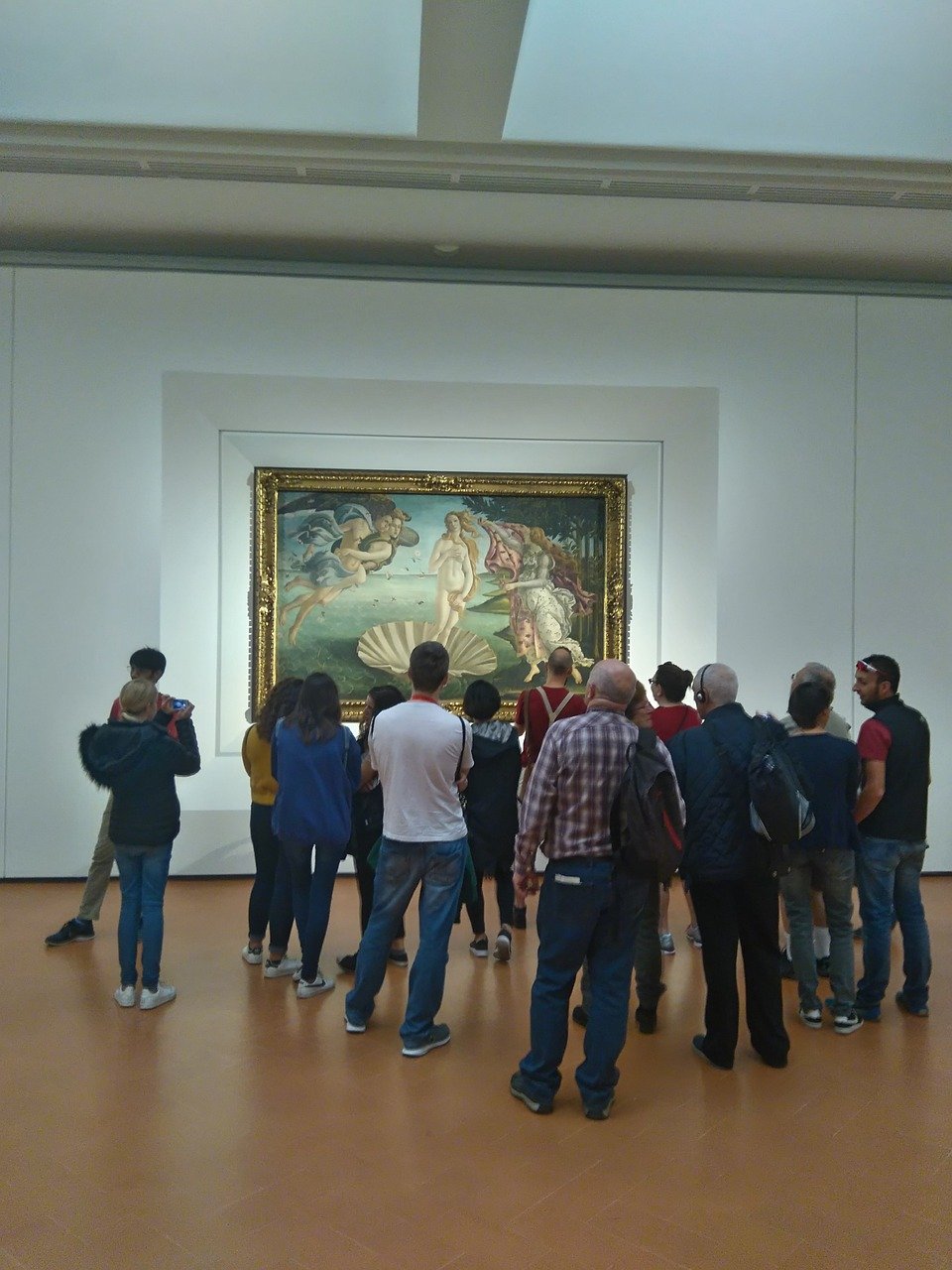
Botticelli, the maestro of the Renaissance, crafted a timeless spectacle in the heart of Florence. Imagine standing before this masterpiece, where the air seems to ripple with the birth of divine beauty. The painting is a harmonious dance of colors: seafoam greens, ethereal blues, and the blush of Venus herself.
As you gaze upon Venus, you're transported into a world where myth meets reality. The active strokes of Botticelli's brush breathe life into the goddess, evoking an ethereal aura. Venus stands, not merely as a figure on canvas, but as a living embodiment of grace, beauty, and the divine.
The scene unfolds with a sense of enchantment, capturing that moment when Venus, born of the sea foam, graces the earthly realm. The winds whisper, and you can almost feel the gentle breeze tousling Venus's golden locks. The sea, a canvas within a canvas, cradles her arrival, each wave a testament to the rhythmic flow of life.
Botticelli's voice echoes through the ages, inviting you to witness the splendor of creation. The reading level is as accessible as a tale whispered in a sunlit garden, making the birth of Venus not just a painting but an animated narrative.
In the midst of the Renaissance's opulence, "The Birth of Venus" is a beacon of optimism and an ode to the allure of classical beauty. Step into this luxurious destination of the imagination, where the brushstrokes of a genius guide you through a realm where goddesses are born from the embrace of the sea, and beauty transcends the boundaries of time.
Nov 11, 2024
Why Italians Eat Dinner So Late: Culture Shock or Best Idea Ever?
Hey, fellow travelers! 🛫🌍 I just got back from an incredible trip to Italy, and there’s one thing I just cannot stop thinking about — how late Italians
Continue reading "Why Italians Eat Dinner So Late: Culture Shock or Best Idea Ever?"
Nov 07, 2024
The 9 Pitfalls of 1 Euro Houses in Italy:
You’ve been misled about €1 houses in Italy! Discover the 9 biggest pitfalls of buying and renovating so you don’t make a costly mistake. Get the facts now!
Continue reading "The 9 Pitfalls of 1 Euro Houses in Italy: "
Nov 02, 2024
New €2 Fee at Trevi Fountain
The recent decision to charge a €2 fee at Rome's Trevi Fountain aims to tackle a growing issue for Italy’s most beloved sites: overcrowding.
The €2 entry fee is expected to be introduced sometime in 2025. This move aligns with new efforts to manage the heavy visitor flow at the popular landmark, particularly with the increased tourism expected for the Catholic Jubilee Year beginning in December 2024. During this period, a temporary walkway will also be constructed to allow visitors a closer view while protecting the site’s surroundings.
The fountain draws thousands of visitors daily, making crowd management a challenge. With over 10,000 people visiting each day during peak times, maintaining an enjoyable, safe experience has become increasingly difficult for tourists and locals alike. This fee could help limit the constant flood of visitors, adding a minor cost that may, in turn, help preserve the area’s charm and give tourists more room to appreciate the artistry of the Baroque masterpiece without jostling crowds.
This measure is just one part of a wider push to protect Italy's historical sites from the unintended impacts of tourism. Popular spots like Venice’s St. Mark’s Square and Florence’s Uffizi Gallery have also implemented crowd-control measures.
While these top destinations are breathtaking, many alternative places across Italy offer equally awe-inspiring beauty—without the throngs of tourists. Italy boasts countless hidden gems: charming coastal towns, serene mountain villages, and under-the-radar historical sites that capture Italy’s magic just as well as the Trevi Fountain.
If you’re drawn to Italy’s remarkable history, art, and landscapes but prefer a quieter experience, there are plenty of wonderful alternatives. These lesser-known destinations let you enjoy Italy at a slower pace, without the added fees and bustling crowds.
For those eager to explore more, click on "continue reading" below the advert to discover hundreds of equally wonderful sights to visit across Italy. Each offers an authentic experience—minus the overwhelming tourist crowds. From untouched beaches, picturesque hilltop villages, or ancient ruins, there’s a hidden corner of Italy waiting just for you.
Oct 28, 2024
Insuring Your House in Italy – Comprehensive Guide for Expats
Discover the essentials of house insurance in Italy, from coverage optionsto costs, and secure your dream home with confidence. Find all you need to know!
Continue reading "Insuring Your House in Italy – Comprehensive Guide for Expats"
Oct 21, 2024
Classic Homemade Tiramisu Recipe Straight from Italy
The ultimate Tiramisu recipe, straight from Italy! This authentic and easy-to-follow guide will have you creating the perfect "pick me up" dessert in no time.
Continue reading "Classic Homemade Tiramisu Recipe Straight from Italy"
Oct 04, 2024
8 Charming Small Towns in Tuscany You Must Visit
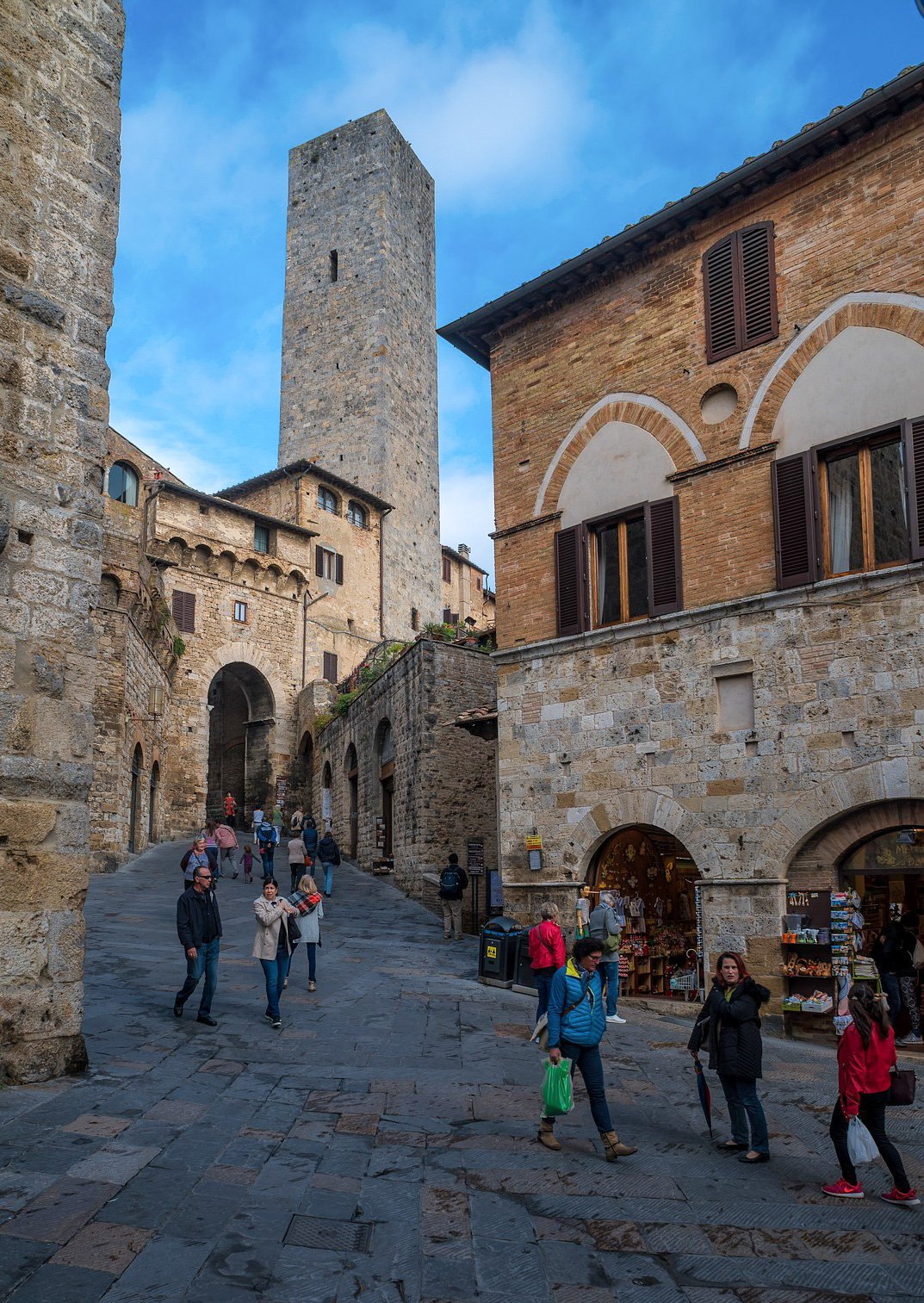
Tuscany, renowned for its rolling hills, stunning landscapes, and historic cities, is also home to many charming small towns that offer a glimpse into authentic Italian life. Here are seven small towns in Tuscany you shouldn't miss:
1. Montemerano
Nestled in the heart of Tuscany, Montemerano is a medieval gem with its cobblestone streets, ancient walls, and charming piazzas. The town's crown jewel is the Church of San Giorgio, which houses beautiful frescoes and artwork.
2. San Gimignano
Known as the "Town of Fine Towers," San Gimignano is famous for its medieval architecture and stunning skyline of towers. Stroll through its historic center, a UNESCO World Heritage site, and enjoy local specialties like saffron and Vernaccia wine. Here's all you need to know about San Gimignano
3. Pienza
Pienza, a UNESCO World Heritage site, is often referred to as the "Ideal City" of the Renaissance. Its harmonious layout, designed by Pope Pius II, offers stunning views of the Val d'Orcia. Don’t miss the Palazzo Piccolomini and the famous pecorino cheese.
4. Montepulciano
Famous for its Vino Nobile wine, Montepulciano is a hilltop town that combines medieval and Renaissance architecture. Explore its elegant palaces, the grand Piazza Grande, and the beautiful church of San Biagio.
5. Volterra
With its Etruscan roots, Volterra boasts a mix of ancient and medieval structures. The well-preserved city walls, the Roman Theatre, and the Palazzo dei Priori are must-sees. Volterra's alabaster crafts are also renowned.
6. Cortona
Perched on a hill, Cortona offers breathtaking views of the surrounding valleys. Its rich history is evident in the Etruscan Academy Museum and the beautiful Santa Margherita Basilica. The town's charming streets were featured in the film "Under the Tuscan Sun."
7. Pitigliano
Often called "Little Jerusalem" for its historical Jewish community, Pitigliano is carved into volcanic tufa rock. Wander through its ancient alleys, visit the impressive Orsini Fortress, and explore the fascinating Jewish quarter and synagogue.
8. Arezzo
Arezzo is a captivating medieval city renowned for its opulent history and vibrant artistic heritage. Wander through its resplendent cathedrals, lively piazzas, and the illustrious antiques market that conjures the charm of yesteryears.
These small towns in Tuscany offer a perfect blend of history, culture, and scenic beauty, making them essential stops on your Tuscan adventure.
Continue reading "8 Charming Small Towns in Tuscany You Must Visit"
Oct 02, 2024
Explore Turin, Italy: Must-Watch Videos of This Elegant City
Let these videos of Turin take you on an incredible journey of discovery through one of Europe's greatest cities.
Continue reading "Explore Turin, Italy: Must-Watch Videos of This Elegant City"
Sep 04, 2024
EES and ETIAS: Do You Need to Be Fingerprinted to Enter Italy?
New ETIAS and EES Rules for Italy: Americans and others who are not EU citizens will need to be fingerprinted and get ETIAS authorization. We Have the Details
Continue reading "EES and ETIAS: Do You Need to Be Fingerprinted to Enter Italy? "
Sep 03, 2024
How to Make Traditional Carbonara: A Step-by-Step Guide
Learn how to make classic Carbonara with our authentic recipe. Simple, delicious, and packed with rich, traditional Italian flavors everyone will love.
Continue reading "How to Make Traditional Carbonara: A Step-by-Step Guide"
Aug 27, 2024
Fried Polenta with Scamorza Cheese
The only recipe for Fried Polenta with Scamorza Cheese you'll ever need or ever want. Don't believe me? Try it and you'll be convinced!
Aug 19, 2024
This is Italy's Most Beautiful Statue: Here's Why...
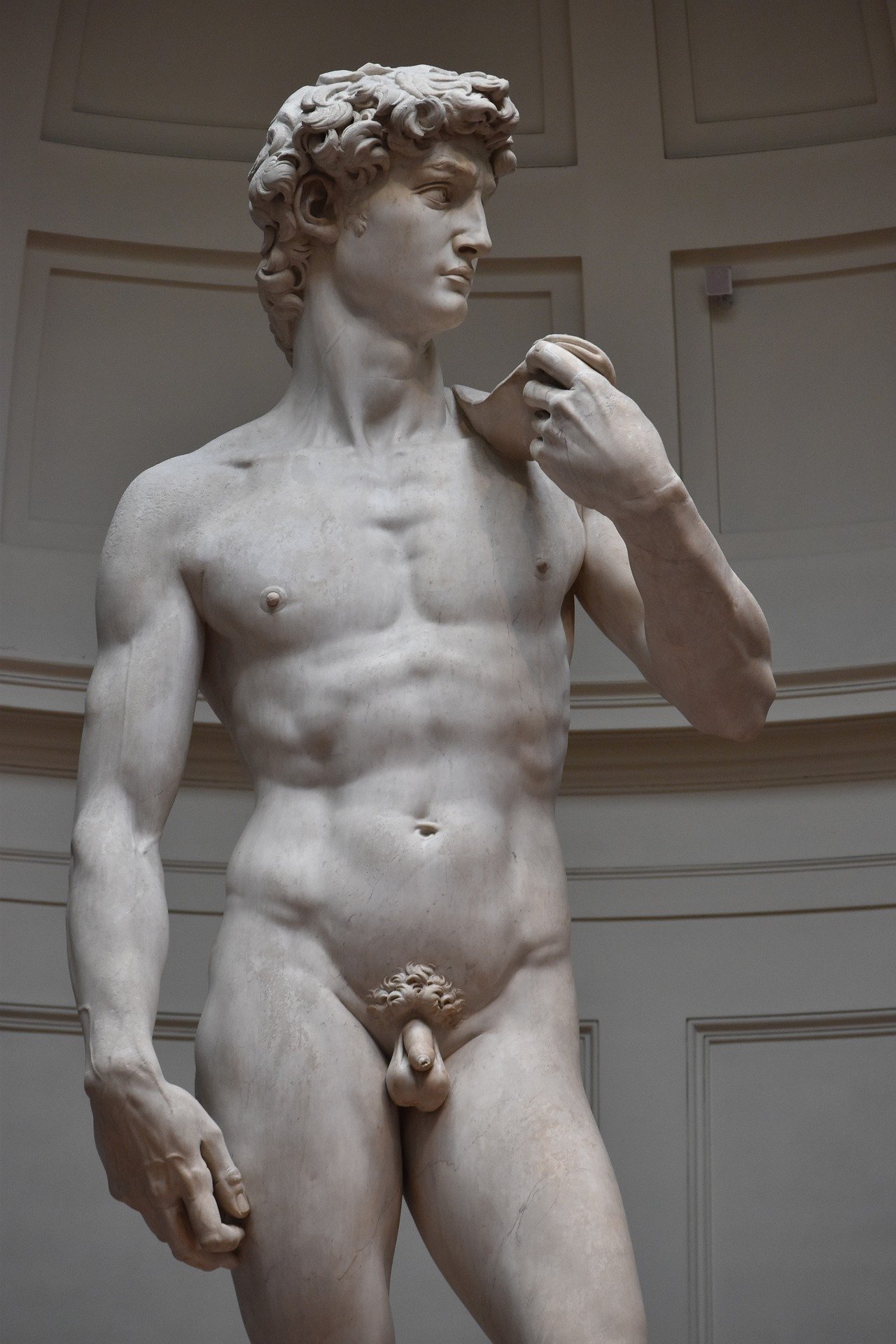
Michelangelo's David is hands down the most beautiful statue in Italy. This stunning masterpiece, found in Florence's Galleria dell'Accademia, perfectly captures the biblical hero David. What makes David so special is Michelangelo's incredible attention to detail.
The artist spent three years meticulously carving this 17-foot marble giant from a single block of Carrara marble, which had been deemed imperfect by other sculptors. Michelangelo's ability to see the potential within this flawed marble block is a testament to his extraordinary vision and skill.
One cool thing about David is his oversized right hand. Michelangelo did this on purpose to highlight David's strength and divine help. Additionally, some art historians believe the hand's size corrects the viewer's perspective when looking up at the statue, enhancing its powerful presence. These artistic choices combine to make David an iconic masterpiece.
Plus, his intense stare, known as "terribilità," shows his readiness to face Goliath, adding to the statue's lifelike feel.
David's relaxed yet poised pose showcases Michelangelo's skill in making the marble seem alive. His use of contrapposto, where the weight is shifted onto one leg, gives David a dynamic, almost real look.
In a nutshell, Michelangelo's David stands out for its anatomical precision, emotional depth, and artistic innovation. This statue isn't just a symbol of artistic brilliance; it's a testament to human potential and creativity. If you ever get the chance, seeing David in person is a must!
Aug 06, 2024
Alba Truffles, The Worlds Finest Truffles
Join the search for the world's finest truffle. Alba truffles are the ultimate gourmet experience and we have everything you will ever need to...
Continue reading "Alba Truffles, The Worlds Finest Truffles"
Jul 31, 2024
It Broke My Heart: Travel Insurance for Italy
The stories we heard broke our hearts. So, when people ask: "Is travel insurance for Italy necessary?" we reply...
Continue reading "It Broke My Heart: Travel Insurance for Italy"
Jul 29, 2024
Decoding the Symbolism in Leonardo da Vinci's The Last Supper
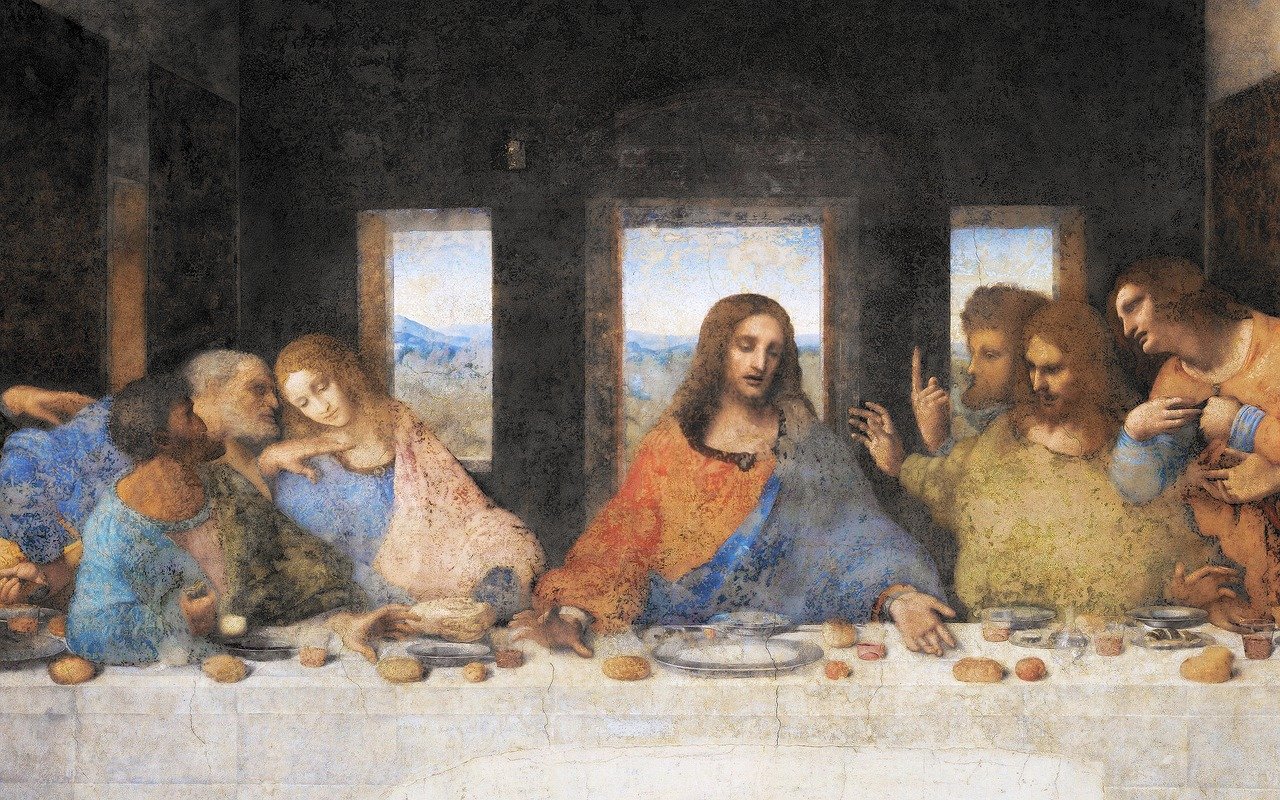
Leonardo da Vinci's "The Last Supper" is one of the most renowned paintings in the world, celebrated not only for its artistic mastery but also for its profound symbolism. Completed between 1495 and 1498, the fresco captures the moment Jesus announces that one of his disciples will betray him, a pivotal event in Christian theology.
The painting's composition is a masterpiece of balance and harmony. Jesus is at the center, forming an equilateral triangle with his outstretched arms, a symbol of the Holy Trinity. His serene demeanor contrasts sharply with the varied reactions of the twelve apostles, grouped in threes to create a rhythm across the table. These groups of three also subtly reference the Trinity.
Each apostle’s expression and gesture reflect their personalities and reactions to Jesus' revelation. For instance, Judas Iscariot, the betrayer, is depicted recoiling, clutching a small bag symbolizing the thirty pieces of silver he received for his betrayal. His face is cast in shadow, a stark contrast to the illuminated faces of the other apostles, symbolizing his moral darkness. Peter, seated next to Judas, holds a knife, foreshadowing his later defense of Jesus in the Garden of Gethsemane. John, the beloved disciple, appears sorrowful, leaning towards Peter.
The use of light and perspective in "The Last Supper" is also deeply symbolic. The room’s vanishing point, directly behind Jesus’ head, draws the viewer’s eye to him, reinforcing his central role. The light emanating from the windows behind Jesus creates a halo effect, subtly alluding to his divinity.
The food and drink on the table are also symbolic. The bread and wine refer to the Eucharist, the Christian sacrament commemorating Jesus’ sacrifice. This element underscores the painting’s religious significance, reminding viewers of the spiritual nourishment Jesus provides.
Leonardo’s "The Last Supper" is more than a depiction of a biblical scene; it is a complex narrative rich in symbolism. Through meticulous composition, gesture, and use of light, Leonardo invites viewers to contemplate the profound theological themes and human emotions encapsulated in this momentous event.
If you enjoy my site, I'd love your support.
All you need to do is book your accommodation via this link or any of the other hotel links on the website. Whether it's for travel to Italy... or anywhere else on earth, your support means the world to us.
You'll get the best deal available, and the income helps us stay independent and keep bringing you the best of Italy.
- HOME
- Our Blog


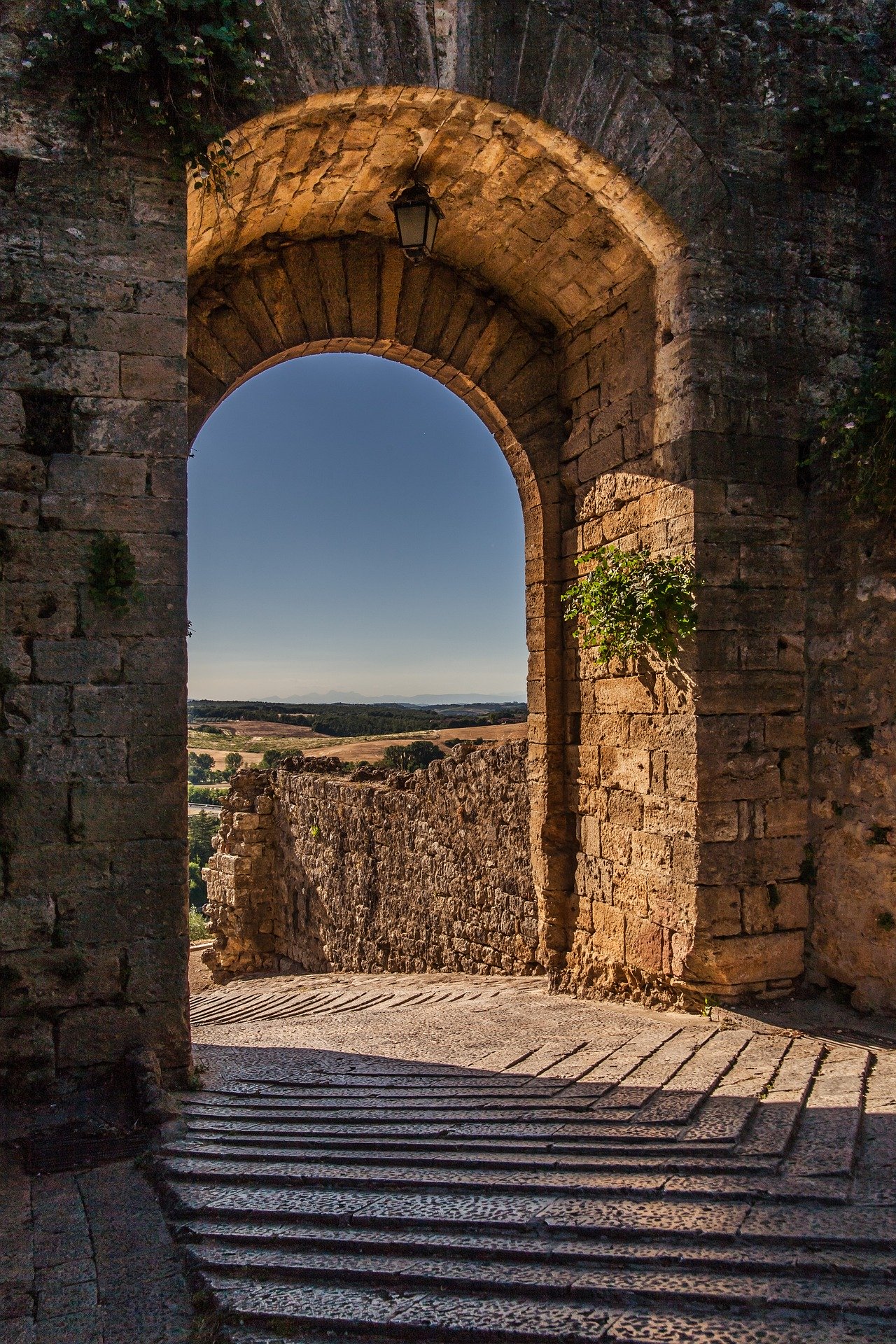



















New! Comments
Have your say about what you just read! Leave me a comment in the box below.